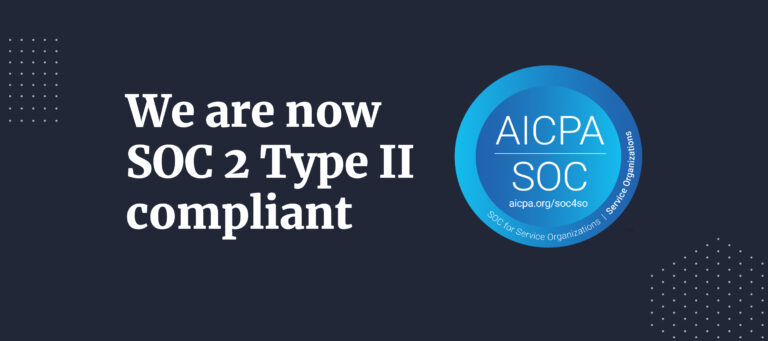Did the title of this piece make your stomach churn? Ours would too if we dropped thousands (or millions!) of dollars on a project that was on a fast track to the bottom of the ocean. Truth is, 70% of digital transformations fail. That’s a large, dry pill to swallow, especially when digital transformations are necessary. To be among the 30% who succeed, you need a solid plan in place.
Some big-time companies have missed the mark with planning, often leading to shame when the news goes public. So, gather around. We’re here to share cautionary tales and lessons learned from failures of digital transformations past. But we won’t leave you hanging high and dry. We’ll also give you a few pointers to make your digital transformation a success.
Famous ERP Rescues
Let’s begin with our beloved chocolatiers, Hershey’s. This household brand couldn’t process $100 million dollars worth of candy, even though the inventory was in stock. It was all due to a new ERP implementation in 1999.
Here’s the kicker. It was Halloween.
A rookie, yet critical, mistake. Hershey’s tried to squeeze in their ERP implementation during their busiest season. Imagine being the guy who created that timeline. Even worse, imagine being the guy who approved the timeline.
ERPs come with a steep learning curve. Without proper training on the new systems, Hershey’s couldn’t meet the peak demand. That resulted in many sad and candy-less children.
Up next, a story about our favorite golf tournament sponsor and waste disposal service company, Waste Management. When looking to revamp their ERP system, Waste Management turned to a trusted partner. Or so they thought. This partner promised to optimize their system within a couple of years with key features and out-of-the-box solutions. This plan did not materialize as promised. After spending about $100 million on this project, Waste Management trashed that ERP and searched for another.
Waste Management believed the product demonstrations were the real deal. Why does this feel like those situations where a “prince” who needs money scams grandmas via email? Sad, but avoidable.
Last, but not least, we have Revlon. The cosmetics giant wanted to revamp its systems, but it overlooked the digital transformation risks. You see, Revlon was already facing some significant operational issues after a new brand acquisition. Still, this didn’t stop them from trying to roll out a new system. They didn’t understand, though, a new system can’t get rid of old, unresolved issues.
If only Revlon had taken the time to recognize, quantify, and mitigate these risks. They could have avoided their stock falling 6.9% within the first 24 hours after the news went public. Yikes.
We know we may have scared you with these stories but look at these as warnings. Digital transformation is an absolute must now, but, you know, only if you want your business to thrive. Everything has associated risks, and digital transformation is no exception. If you’re a horror fan and want to learn from more big-name failures, there are plenty to keep you up at night.
The Role of the Consultant
So, you read the stories above and you’re thinking, “That would’ve never happened if they had a consultant.” But they did. Who do you think helped create the timeline for dropping Hershey’s new ERP?
Digital transformation consultants play a critical role in assessing, designing, monitoring, and ensuring efficient change. They develop strategies to help you understand new technology and set clear objectives and timelines. Their efforts can help bring much-needed change to organizations, that’s if they’re able to.
Let’s clarify. A consultant can create the most beautiful, efficient plan of all time, but it’s not their job to make it work. They can’t force the business to follow the plan and timeline they suggest. They need to work hand-in-hand with the organization’s leaders to learn where they need improvements across the board. This requires input, open communication, and some freedom to create successful change.
Digital Transformation Done Right
Digital transformation can be daunting. Money and the success of your business are on the line. You’re afraid, we get that. First of all, congratulations. Admitting you’re scared is the first step. Luckily, we’re here to guide you towards a successful digital transformation.
If you’re ready to get started in your digital transformation, use these pillars as a guide.
Sequence Is Key
We cannot stress this enough: the order of events for your digital transformation matters. Having a digital strategy set is a good place to start. Bringing in a consultant to help you succeed? Even better! Now, you’ll need broad input and information across the organization to understand your current processes.
Reminder: There’s no point in bringing in automation technology to help broken processes. (Remember what happened to Revlon?) High-level visibility will guide you to make the right decisions, though.
Once you have a holistic look at your entire organization and processes, you can fix all the cracks. Then, feel confident that you’ve found the best opportunities for efficiency.
Welcome to the Same Page
Now that you’ve got the full scope, make sure everyone is on the same page. A digital transformation strategy should involve every facet of your organization. If your digital transformation only benefits one department, you only fix part of the problem. If your teams are working in silos, it’s time to start developing some collaboration skills.
Cross-team collaboration can be a challenge. But it’s necessary to establish a seamless customer experience and exceptional end-to-end process performance. The more you involve your entire team, the more they’ll buy into the changes.
Check Your Focus
Business leaders often use team performance to gauge if digital transformation is working. But they forget about the most important piece: the customer. Focus on both your customers and business, and you’ll create a win-win strategy. That’s the ultimate goal, isn’t it?
So, we’ve spooked you with the cringe-worthy, costly digital transformation fails. But we hope we’ve inspired you with some core pillars to make your journey a success. Now, it’s up to you. Grab some Hershey’s kisses, make a plan, call an all-hands meeting, and get started.





